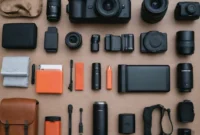Navigating the world with a disability presents unique challenges, but it shouldn’t deter you from exploring new horizons. “How to Travel with a Disability” provides an in-depth roadmap to empower you with the knowledge and resources to embark on accessible adventures, ensuring that your journey is as fulfilling as it is unforgettable.
From meticulous planning to navigating transportation, finding accessible accommodations, and discovering inclusive activities, this guide covers every aspect of accessible travel. It also addresses essential considerations such as medical management, assistance, safety, and the emotional well-being of travelers with disabilities.
Planning and Preparation
Proper planning is paramount for accessible travel. Research destinations thoroughly, considering accessibility features of accommodations, transportation, and attractions. Utilize online resources and consult with travel agents specializing in disability travel for expert guidance.
Finding Accessible Accommodations
Research hotels, vacation rentals, and accessible bed and breakfasts.
Check for features like roll-in showers, wide doorways, and accessible elevators.
Contact properties directly to confirm specific accessibility needs.
Arranging Accessible Transportation
Plan transportation options, considering wheelchair accessibility.
Book accessible taxis, and rental cars with hand controls, or arrange for airport assistance.
Explore public transportation options and inquire about wheelchair-accessible routes.
Identifying Accessible Attractions
Check websites and guidebooks for accessibility information on attractions.
Contact venues directly to inquire about specific accessibility features.
Consider visiting during off-peak hours to avoid crowds and ensure better accessibility.
Benefits of Travel Agents
Travel agents specializing in disability travel have expertise in planning accessible itineraries.
They can negotiate accessible accommodations, transportation, and tours.
They provide personalized guidance and support throughout the travel experience.
Activities and Attractions
When traveling with a disability, it is crucial to consider accessibility when planning activities. Researching and identifying accessible attractions and activities can enhance the travel experience and ensure a fulfilling and enjoyable trip.
Accessible Museums
Many museums have made significant strides in improving accessibility for visitors with disabilities. They offer features such as ramps, elevators, audio guides, and tactile exhibits. The Louvre in Paris, for instance, provides wheelchairs, tactile maps, and audio descriptions for visually impaired visitors.
Historical Sites
Historical sites often present challenges for travelers with disabilities due to uneven terrain or architectural barriers. However, many sites have implemented accessibility measures to accommodate visitors. The Colosseum in Rome, for example, offers accessible tours with ramps and elevators.
Natural Wonders, How to travel with a disability

Exploring natural wonders can be a rewarding experience for travelers with disabilities. National parks and other protected areas are increasingly providing accessible trails, boardwalks, and viewing platforms. The Grand Canyon National Park, for instance, offers accessible rim trails and wheelchair-accessible buses.
By considering accessibility when planning activities and attractions, travelers with disabilities can fully experience the destination and create lasting memories.
Medical Considerations
Managing medical needs while traveling is crucial for ensuring a safe and comfortable trip. Travelers with disabilities should carefully plan to address their specific requirements, including packing medications and medical equipment and researching the availability of medical services and support at their destinations.
Packing Medications and Medical Equipment
Pack essential medications in their original containers and carry a doctor’s note or prescription to avoid any issues at security checkpoints.
Store medications properly to prevent spoilage or damage during travel.
Consider packing extra supplies of critical medications in case of delays or lost luggage.
Carry medical equipment, such as assistive devices, inaccessible bags, or cases.
Pack a first-aid kit with basic supplies like bandages, antiseptic wipes, and pain relievers.
Medical Services and Support at Travel Destinations
Research the availability of medical services and support at your travel destinations. This includes:
Identifying hospitals, clinics, and pharmacies that cater to specific medical needs.
Checking for accessible transportation options to medical facilities.
Investigating the availability of medical equipment rentals or purchase options.
Informing your travel companions or tour operators about medical conditions and emergency contacts.
Safety and Security
For travelers with disabilities, safety and security are paramount concerns. It’s crucial to be aware of potential risks and take necessary precautions to ensure a safe and enjoyable trip.
One important consideration is the accessibility of the destination. Research transportation options, accommodations, and attractions to ensure they meet your specific needs. It’s also wise to inform your travel companions, hotel staff, and tour operators about any mobility or sensory impairments you have.
Staying Safe and Secure
- Be aware of your surroundings: Pay attention to people and activities around you, especially in crowded areas.
- Trust your instincts: If a situation feels unsafe, remove yourself from it immediately.
- Carry a whistle or personal alarm: These devices can attract attention in case of an emergency.
- Keep valuables secure: Use a money belt or other concealed storage device to protect your passport, cash, and credit cards.
- Inform someone of your itinerary: Share your travel plans with a trusted friend or family member, and keep them updated on your whereabouts.
Last Point: How To Travel With A Disability
Remember, traveling with a disability is not about limitations but about embracing the boundless possibilities that await you. With proper preparation, a positive mindset, and the support of invaluable resources, you can confidently create memories that will last a lifetime.
Question & Answer Hub
Is it necessary to inform airlines about my disability in advance?
Yes, it is recommended to notify the airline at the time of booking to ensure they can provide appropriate assistance and accommodations.
What types of accessible transportation options are available?
Accessible transportation options include wheelchair-accessible vehicles, ramps on buses and trains, and designated seating areas for passengers with disabilities.
How can I find accessible accommodations that meet my specific needs?
Research online using platforms that specialize in accessible travel, read reviews from other travelers with disabilities, and contact the accommodation directly to inquire about specific features.
What are some tips for managing medical needs while traveling?
Pack essential medications and medical equipment, inform the airline and destination about your medical needs, and carry a medical ID card with emergency contact information.





